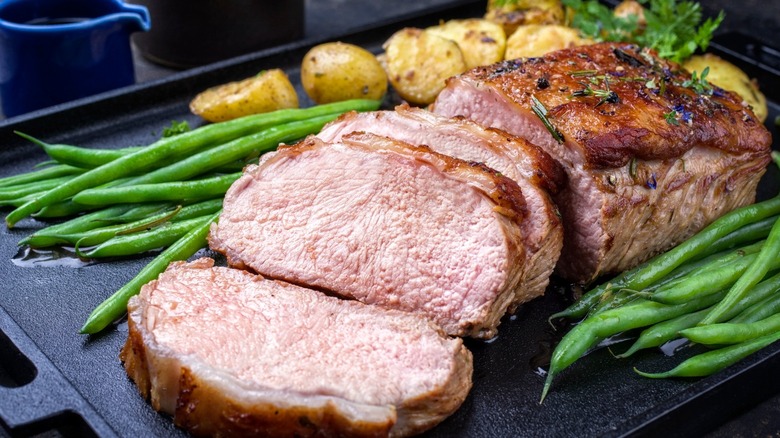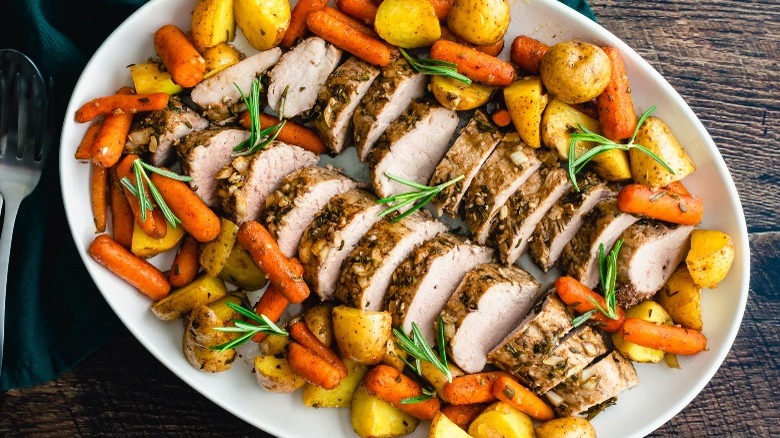The Protective Layer Pork Tenderloin Needs For A Perfect Pan Sear
At some point in life as a guest at someone else's table, you may have had to choke down dry, flavorless pork tenderloin, breaking up all that tedious chewing with plenty of water and pausing to rest your jaw with some conversation that's hopefully not as dry as the meat. Anyone who's ever experienced the joy of eating perfectly cooked pork tenderloin knows what a travesty the opposite can be (both for your tastebuds and your jaw!). Pork tenderloin should never be something you just "get through," and it won't be, once you've learned this searing game-changer of a hack.
One of the things that makes pork tenderloin so tricky is its lack of fat. This leanness means tenderloins dry out easily and can even be downright tough when overcooked (especially if you forgot to remove the silver skin). While you may know that searing the outside of your meat can help lock in all its juicy goodness, if you're not careful, you could end up with a burnt outside and a dry, fibrous inside. This is why a protective outer layer on the meat is essential to achieving an ideal pan sear. That perfect sear gives you a great shot at moist, mouthwatering tenderloin, resulting in pork that's flavorfully browned but still deeply tender. So, how can you protect your pork? While it might sound a little corny, that's only because — it's cornstarch.
How to use cornstarch to pan-sear pork
A thin coating of cornstarch creates a powerful barrier between the violent heat of your sizzling hot pan and the raw tenderloin, giving it a more even sear and helping to prevent any burning, sticking, or tearing. It also absorbs any excess exterior moisture, allowing the pork to brown more thoroughly and keeping any sogginess at bay. It also helps trap those flavorful juices in the center of the cut, which prevents it from drying out. In addition to all that, this layer of cornstarch also makes a great surface for a finishing glaze to stick to.
To use this technique, spoon out an ample amount of cornstarch into a wide bowl or onto a plate and dredge your seasoned pork tenderloin (remember to properly trim it first), thoroughly coating it. Then, let it rest for about 10 minutes to soak up any residual surface moisture. Then add your tenderloin to a hot pan for a quick sear on all sides before transferring it into the oven to finish. Cook to the desired internal temperature of 145 degrees Fahrenheit and let it rest for 10 minutes before serving and you'll soon be chewing the fat with your friends over a crispy, succulent pork tenderloin.

